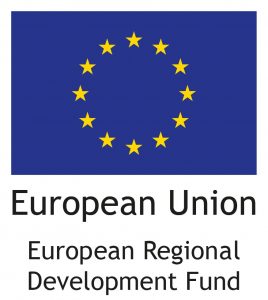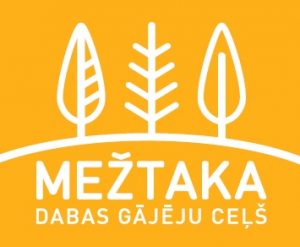Baltezers — the place where Riga’s water begins
On our arrival at the Riga Water Supply Museum, the main hero of the day Pauls Timrots is waiting for us. It is a very beautiful day in Baltezers, and thanks to the bright sun, the museum we will visit afterwards is also filled with that shiny brilliance. But everything in its own time. We are talking to Pauls, who, although born in Riga, has spent his entire life in Baltezers and calls it his home. He laughs that in the Water Supply Museum and former pumping station, he’s like an indigenous person having been there since ancient times. And although the 10-year work as a storyteller of the museum is officially over, Pauls is not going to disappear anywhere unless he told to leave.
Pauls’ parents moved to Baltezers, avoiding the mess of the war, when he was only six years old. At the age of 14, the pumping station became part of his life, when the young man was put to work on the construction of the new water supply wells during his summer holidays. Although officially a 14-year-old young man could only be employed for four hours a day, when there was a lack of manpower, no one looked at years or hours worked. However, we do not receive a clear answer what he wanted to become as a child. His father had directed him to become either an electrical engineer or a chemist because, as Pauls recalls, his father kept saying, “There is a future in chemistry.” It must be acknowledged though, there is virtually no chemistry at the pump station. Water used to be chlorinated in the past, but it was pointless, because the quality of the water obtained around Baltezers is very high and there is no need for chemical treatment.
As a late teen, however, he attended a vocational school where he learnt cold working – a method of metal processing. Work in the sector brought Pauls back to his native Riga, where he was hired at the Rīgas Vagonbūves Rūpnīca (RVR) — Riga Carriage Building Plant, while he continued to spend his spare time in Baltezers. When a job opportunity appeared and wishing to start a family, he moved back to Baltezers. The grey-haired gentleman says, he preferred to spend more time with his children than on his way to Riga and back. Initially, he worked in Ādaži, but in 1993 he received a job offer at the pumping station where his wife was working – as an operator supervising the electrical equipment and pumps.
The history of obtaining water in Baltezers is much more ancient than our storyteller, and this story extends over several centuries. Prior to the construction of the station in Baltezers, Riga water to Riga was supplied with by Maskavas Street pumping station from the River Daugava. However, around the 1890s, outbreaks of cholera and typhoid, diseases associated with the quality of water, became an issue in the city. Although the Daugava plotters were blamed for the outbreaks, it became clear that a new solution was needed to provide Riga with quality and clean water. The city carried out an in-depth exploration of water resources, and even invited specialists from Munich for it. Although it is not known what, hunch or knowledge, prompted control drills in the area of Baltezers, they found what they were after. The Riga City Council reported: “There are inexhaustible groundwater resources in Baltezers.”
This gave a start to the construction of the current pumping station. As Mr Timrots points out, the pace of work was high, since the construction of the entire system, which included the buildings, installation of the machinery and laying the water main, started in May 1903 and finished in October 1904. Much has changed over the years, there are already five instead of the original one station in the immediate vicinity, and instead of the original 42 filter wells, now there are about 300. To the question of when the best times in the history of water supply have been, Pauls answers, without doubt, from the technical perspective, the best times are now. For example, in the past, when electricity supply ceased in the houses around the pumping station for at least five seconds, it was clear that the person on duty at the station alone would not be able to cope. And then, as Pauls says, “whoever was at home at that moment, rushed to help, and no one in those days asked anything for it. It was a kind of tradition we had. “These days, however, workers do not have to deal with such problems. However, one remains unchanged, water in Riga remains to be one of the cleanest in Europe.
We also want to overturn the stereotype that water coming from Baltezers is being pumped from the lake with the same name. It is not so, because the water is extracted from the above-mentioned filter wells, and it is the high quality groundwater that we consume. During our conversation, we also manage to talk about both family and values and the history and development of the station. And we can assure you that there is really something to see in the museum: the old cast-iron machines get along well with the big green palm trees the employees themselves have grown from the seeds found in Sochi.
In the area of the Riga Planning Region, there are four tours of the long-distance Forest Trail hiking route: Riga–Baltezers, Baltezers–Vangaži, Vangaži–Rāmkalni, Rāmkalni–Sigulda. The Forest Trail is a long-distance hiking route starting in Riga and continuing to Tallinn. The route of around 1050 kilometres comprises 50 separate one-day tours, approximately 20 kilometres per day. The Forest Trail is being developed within the “Long-distance cross-border hiking route” project implemented with the support of the European Union and the Central Baltic Programme of the European Regional Development Fund.


